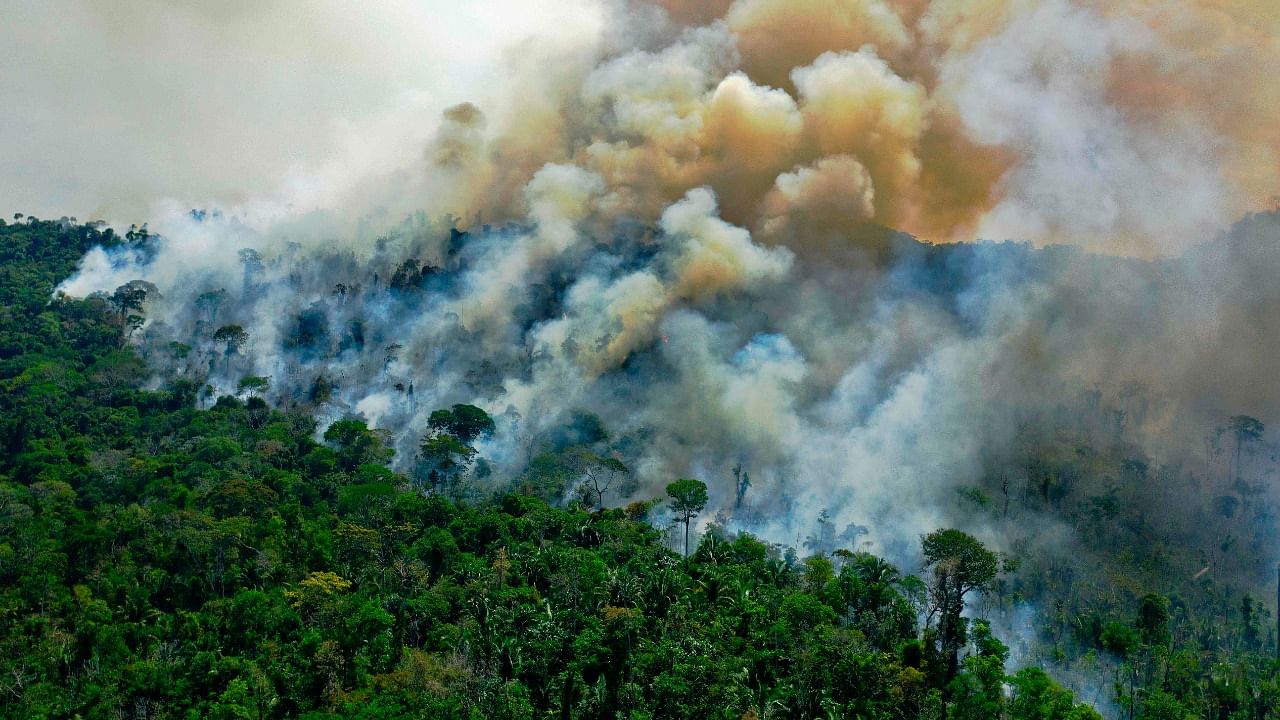
The Amazon rainforest has become slower at recovering from longer periods of drought over the past two decades, damaging its complex ecosystem and pushing the world's largest tropical forest nearer a possible tipping point, researchers said Monday.
A study published in the journal Nature Climate Change, found that more than three-quarters of the rainforest has been losing its ability to recover from shocks, such as droughts and fires, and return to a healthy state.
"In (forest) areas that are closer to human land use, such as urban areas and croplands, they tend to be losing resilience faster," said Chris Boulton, one of the report authors from the University of Exeter's Global Systems Institute.
Drier areas that receive less rainfall also have been particularly hard hit, he said during an online event.
Curbing rising Amazon deforestation is vital to preventing runaway climate change impacts because of the vast amount of planet-heating carbon dioxide absorbed by the forest's trees.
Researchers looked at satellite data that estimated the total amount of biomass - trees and other plants - in a given area as well as the water content of trees and how green the vegetation appeared, all indicators of forest health and resilience.
They also examined month-to-month changes as the forest responded to fluctuating weather conditions over a 20-year period, a long enough time span to observe changes in resilience, Boulton said.
The resilience of the Amazon ecosystem in particular dropped during major droughts in 2005 and 2010, part of an ongoing decline from the early 2000s to 2016, when the most recent data was collected, the study found.
Scientists say dry seasons in the Amazon basin - spanning eight South American countries - have become longer and droughts have become more common and more severe as climate change intensifies.
"As a result, we would expect the forest to recover more slowly from a drought now than it would have 20 years ago," Boulton said.
Tipping point closer?
As more of the rainforest is cut down or burned and the Amazon becomes less resilient, it could reaching a tipping point where significant parts of the forest canopy are lost and become drier open savannah or shorter, drier forest, scientists warn.
That would effectively trigger the death of the Amazon as a rainforest, scientists have said, with devastating consequences for biodiversity and climate change.
Such a switch could trigger the extinction of thousands of species and the release of such a colossal quantity of carbon dioxide into the atmosphere that it would sabotage global attempts to limit global climate change.
It is not clear when that critical tipping point might be reached or how long it would take for the forest to switch to savannah once a tipping point is crossed, the report authors said.
But scientists said drier areas of the Amazon rainforest, where most resilience has been lost, are likely to reach the tipping point sooner.
The satellite data collected "means we have likely moved closer to that tipping point, (but) it also suggests that we haven't crossed that tipping point yet, so there is hope," report author Niklas Boars, of the Potsdam Institute for Climate Impact Research and Technical University of Munich, said during the online event.
Tim Lenton, director of Exeter's Global Systems Institute and another report author, said the loss of resilience observed in the Amazon "is quite pronounced and clear and statistically significant".
What was also evident, he said, is that drier forests are a factor in "more intense fires that spread further."
Veteran tropical ecologist Daniel Nepstad, who was not involved in the report, said some parts of the rainforest already have turned into scrubland, showing "glimpses of what regional tipping points look like, especially in the southeastern Amazon."
"I don't see the forest is going to (suddenly) flip over to be a savannah," Nepstad, who heads the U.S.-based Earth Innovation Institute, told the Thomson Reuters Foundation.
"It's going to be a long process of scrubification - thorny scrubland that increases vulnerability of forests," he said.
Watch the latest DH Videos here: